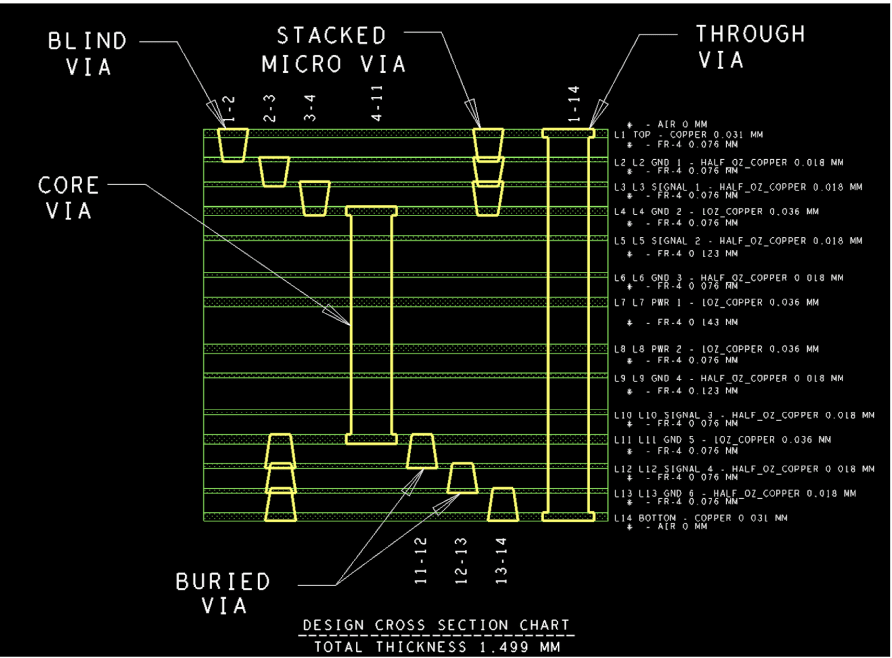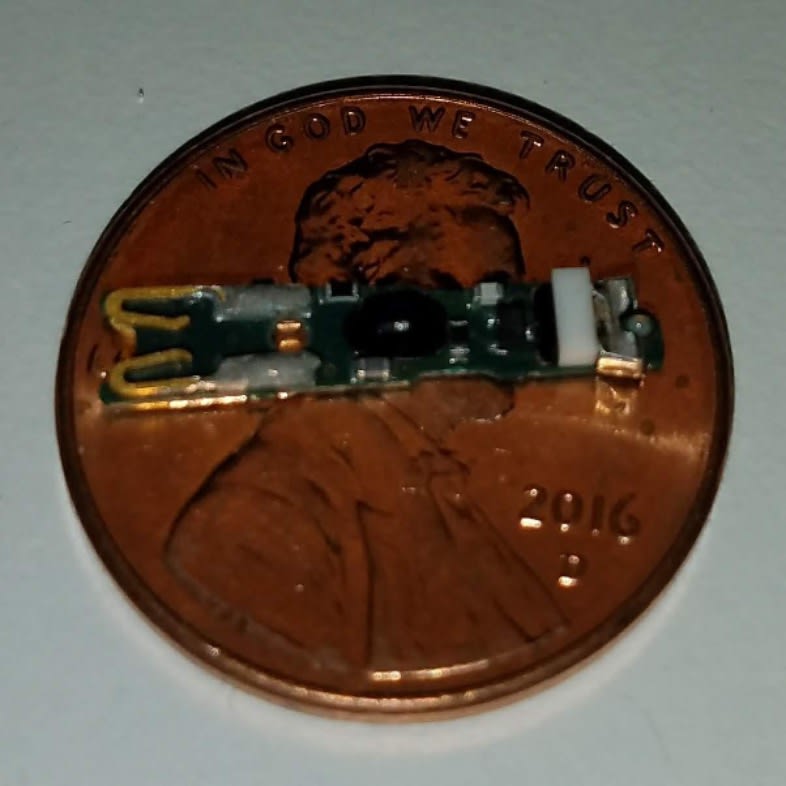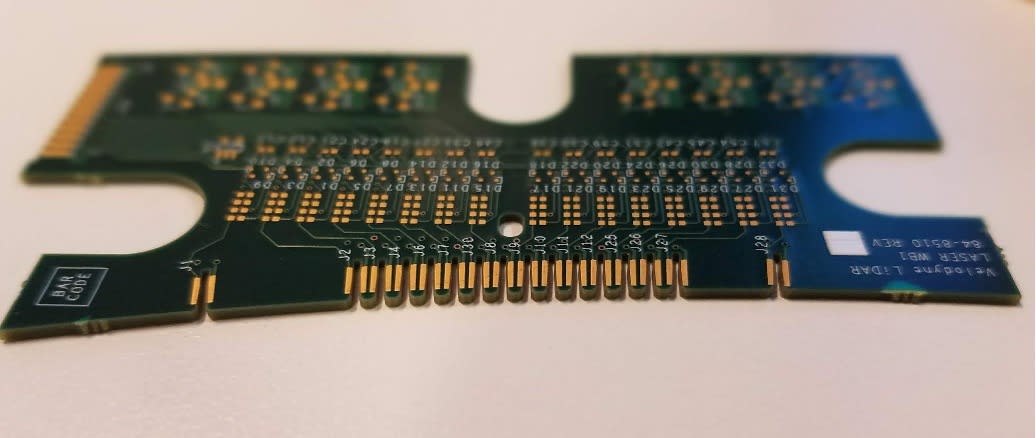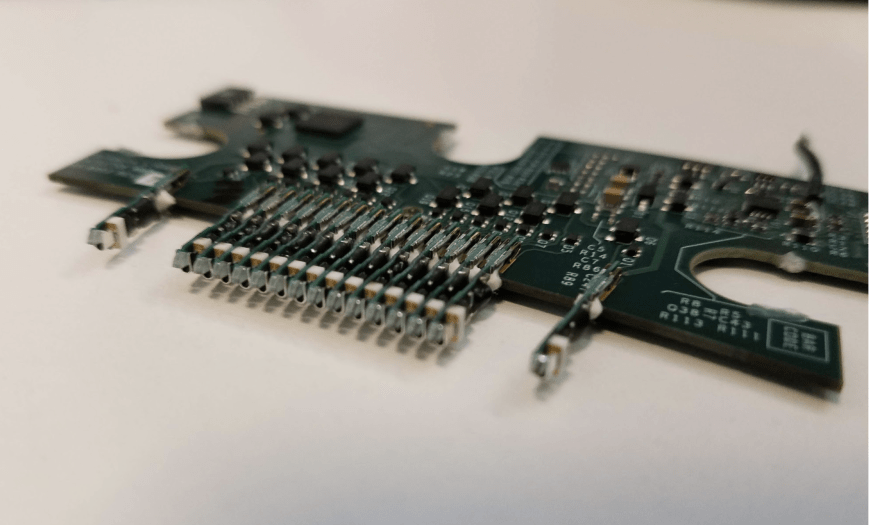To Design For PCB Thickness
For as long as there have been PC boards, it seems like the nominal thickness has been set at 0.062 inches – or in Latin, 1.5748 mm but call it 1.6 for short. In practical terms the standard dielectric materials available can support this board thickness while providing anything from 2 to 20 layers. I would imagine that 4 layers is still the most common use-case.
Larger boards are going to have more connections and will also require more stiffness. In order to manage the connectivity and flatness requirements, standard PCB thickness targets ratchet up to 2.4 mm and 3.2 mm On the low side, we find 1.0 mm and down to 0.8 mm. All of these targets are related to using so-called gold fingers as a printed edge connector.
It’s About Connectivity and Solderability
This was all handed down from the back-plane and daughtercard configurations we find in our tower computer systems. The motherboard has the expansion sockets and the memory cards come with the fingers to plug and play. As a result of this variety, a lot of connector vendors who market to plated through hole technology users will offer different pin lengths that fit the range of board thickness options.

Figure 4. - A 14 layer board where the stack-up would be designated as a 3-N-3 as a general case to describe the number of lamination sequences and a 3-8-3 for a more specific case to designate the total number of layers. Image Credit: Author
One of the edge connector vendors has an offering that accommodates boards between 1.37 mm and 1.8 mm. You have to imagine some flexibility is due when the PCB thickness variance is taken into account. This is probably the most important takeaway from this column. The construction of the board with all of the material and process variables gives rise to a +\-10% process window in terms of PCB thickness.
The Tolerance Stacks Up Quickly
Doing the math for a standard 1.6 mm board gives us 1.6 mm minus 0.16 mm for 1.44 mm on the thin side and up to 1.76 mm on the high end. The broad thickness range for the connector mentioned above is just right for this application. The problem is that not all of the mechanical engineering world is fully aware of this limitation; not by a long shot. While the thinner boards tighten up the process, the thick ones need more than the standard allotment for the Z-axis.
Case Study: Two Possible Thermal Solutions; One Winner
We had this QFN component that ran really hot and would fail. It had a pretty good sized ground paddle in the middle where the plugged vias were not up to the task. The mechanical designer decided to cut a slot in the board under the ground paddle. Then he would position the board over a pedestal that passed through the slot. He wanted a very thin layer of thermal grease on the top of the pedestal rather than a thermally conductive pad.
The other thing he wanted was a limit on the board thickness to +/- 0.10 mm rather than +/- 0.16 mm that I was calling out. I told him that he couldn’t have a tight tolerance on the stack-up. The height of the pedestal was going to be predicated on hemming in the PCB fabrication process. You can do that with an aluminum billet but not with a cured strata of copper, glass and resin. We taped out a board with his specs and let the chips fall where they may. Of course, there was DFM pushback on the thickness callout.
We also did a parallel project where I added Dupont CB100 thermal fill to all of the ground paddle vias. Not just the ones under the problem child but anywhere they would put a check on thermal issues. Finally, the day came when the two boards faced off and measurements were taken.
This was a case where the EE effort won out over the ME version by a good margin. The thermal vias were not affected by variations in PCB thickness. They were a bit of a cost concern but the project did move forward with the thermal problem solved. The moral of that story is that we can’t put tight controls on multi-layer Printed Circuit Boards. If you want to be in the game, you have to be the bearer of this cold, hard fact.
Is It “In To Be Thin”?
There is a lot to be said for thinner boards. They have a singular attribute where they can be depaneled with lasers rather than traditional milling or V-Score. As far as I know, the maximum thickness for the laser treatment is 0.5 mm. The makers of the laser ablating machines don’t brag about their maximum cutting depth.
What I learned about it is from working with a specialty PCB vendor that focussed on optical solutions. It seems to be about the number of passes to cut through the dielectric materials and any metal that may be present. One of the bugs encountered in laser depanelization is when the laser scorches the board edge. It’s called carbonization along with some other not-so-nice words.

Figure 1. Has to be the smallest PCB I’ve ever met. Let’s just say that some rules were bent in the making of this board. Image Credit: Author
One nice thing you can do for these thinner boards is to provide sufficient mounting hardware locations so that the flexing of the board does not stress the solder joints. In this case, three generous slots provide mounting locations for these quirky printed circuit boards.

Figure 2. Laser depanelization is a must to get this intricate shape. Image Credit: Author
What we gained other than a fancy outline was the ability to handle finer edge-to-copper minimums. That may sound like a small win until you consider the orthogonal board-to-board fusion we had going on there. Groovy little cut-outs accept ridiculous little boards that shoot lasers everywhere while an equal number of detectors spin in harmony to catch the rebounding light off of the local terrain. These Lidar sensors put the fabricators to the test. All of my round boards came from this platform.

Figure 3. The tiny boards meet the little board in an unusual connectorless fashion. Giving sensory perception to a machine can require some out of the box thinking. Image Credit: Author
To wind this up, there are trade offs to consider for each PCB project. Working out the routing scheme through fan-out studies and experience gets you to the optimum layer count. The electrical and mechanical constraints add the spice to the mix where the Z-axis gaps between the metal layers are established. Simple things like metal loading have a direct effect on the geometry. Having some traces on a layer is not the same as a copper pour in terms of the outcome.
Those factors add up to a total board thickness. Soldermask and other treatments add small but potentially significant differences. A board could actually swell up just from being in a humid environment. That’s why assembly houses routinely prebake boards prior to assembly. No surprise that there are a lot of variables when it comes to PCB thickness.